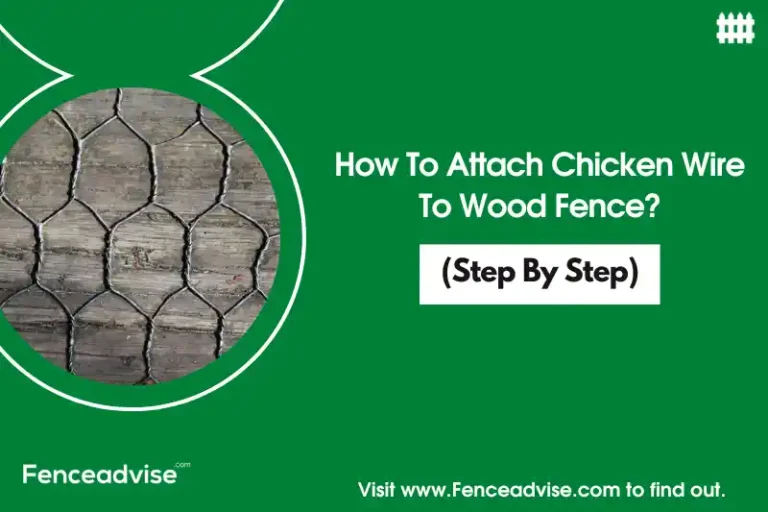We include products we think are useful for our readers. If you buy through links on this page, we may earn a small commission. Read our affiliate disclaimer here.
Wooden fences are a popular choice for their versatility and aesthetics. However, wood is prone to mold and algae growth, and will collect dirt over time. These will make your once pristine wooden fence look old and dirty.
Cleaning off the dirt should be done immediately to restore its former beauty, and doing it with a high-pressure hose seems like the easiest way to do so, but is it the best method to use in every situation? Continue reading this article to find out.
Talk to a Fence Contractor Near You
Does Pressure Wash Damage Wood Fences?
Yes, pressure washing can damage wooden fences. Pressure washers can produce pressures from 750 psi to 30,000 psi, with some models going higher than that.
According to Oklahoma State University, the amount of pressure needed to crack wood starts at 5,000-15,000 psi so the pressure setting on the pressure washer should be significantly lower and set around 1,500 psi to avoid causing damage to the surface of the wood.
Our Pick
Sun Joe SPX3000 Pressure Washer
Sun Joe SPX3000 Pressure Washer is a powerful pressure washer that can help you tackle a variety of cleaning tasks around your home, building, RV, cars, trucks, boats, and more. It is equipped with a 14.5-Amp/1800-watt motor that generates up to 2030 PSI.
Can You Pressure Wash Weathered Wood?
Yes, the pressure washer method can be used on weathered wood. Wood that has been exposed to the elements will result in mold and algae growth because of moisture build-up on the surface of the wood.
Although weathered wood is weaker than newly dried lumber, most can still be subjected to a high-pressure wash set around 1,500 psi. It will greatly benefit from a combination of a bleach solution spray followed by a high-pressure wash to remove all the dirt, mold, and algae.
Best Way To Clean A Wooden Fence
The best way to clean a wooden fence is to first identify what kind of dirt you are trying to get rid of. Some kinds of dirt are not that hard to remove so here are some other methods to use for different levels of dirt:
- Garden hose: a garden hose will provide enough water pressure to remove mud stains and loosely embedded dirt. It can also restore the fence’s original color if it was being covered up by dust.
– Check our recommended garden horse here.
- Soap and a bristle brush: If water isn’t enough, get some soap, put it in a pail of water, and with a bit of elbow grease it can remove more stubborn stains compared to just using a garden hose.
- Bleach: commercially available bleach can be used to kill off fungi and bacterial growth that are staining your wooden fence. To neutralize those tough stains caused by mold and algae growth, all you have to do is mix 1 cup (250mL) of bleach into a gallon of water for a 1:15 bleach-to-water volume ratio and spray it onto the fence. It is important to remember that this method might damage your plants.
- Pressure washer: the benefit of using a power washer is that you don’t need to use any caustic chemicals that can harm your plants, and by controlling the pressure output to around 1500 psi then the damage to your wooden fence will be minimal to non-existent. Making this a great and simple tool to use for removing stubborn stains, algae, dust, and mold from your fence.
– Check our recommended pressure washer here.
If applied properly, all these methods can restore the natural color of the wooden fence that was hidden by all the muck and grime that have built up over time
Get Matched with Local Fence Professionals
Answer a few questions and we’ll put you in touch with pros near you.
How Do You Treat Wood After Power Washing?
There are two ways to treat the wood post-cleaning to further protect and extend its life of the wood:
- Staining: wood staining is a popular method to revitalize and protect wood if it is to be left out and exposed to the environment. Staining can add color, highlight the wood’s grain, and will penetrate past the surface of the wood to protect even the inside of the wood against rain, snow, and the weather in general.
- Sealing: Unlike wood stains, wood sealers do not penetrate deep past the surface of the wood. Wood sealers are used to apply a moisture-repellent layer on the surface of the wood because moisture can seep into the surface of the wood, it will promote mold and algae growth if not prevented.
Some wood stains are marketed to contain both stain and sealer formulations, so they will provide dual protection against moisture. It is also important to remember that before applying wood stains and sealers, the fence must be dry before application.
Final Thoughts:
Even with the relative simplicity of other methods and without the need to purchase a power washer, pressure washing can sometimes be the superior method to get rid of dirt and grime from all sorts of surfaces, just blast the fence with water then you’re good to go.
Without needing to use caustic chemicals, pressure washing is a viable method to clean the surfaces of wooden fences, especially if one wants to protect their plants from the harmful chemicals found in bleaches and detergents.
It is surely one of the better ways to clean a wooden fence if one has a pressure washer.
At FenceAdvise, we pride ourselves on being the most reliable and trustworthy source of fencing information. Our articles are based on only the highest quality sources, including peer-reviewed studies, to ensure that our readers always have access to accurate information. Read more about our Editorial Guidelines, About Us.









